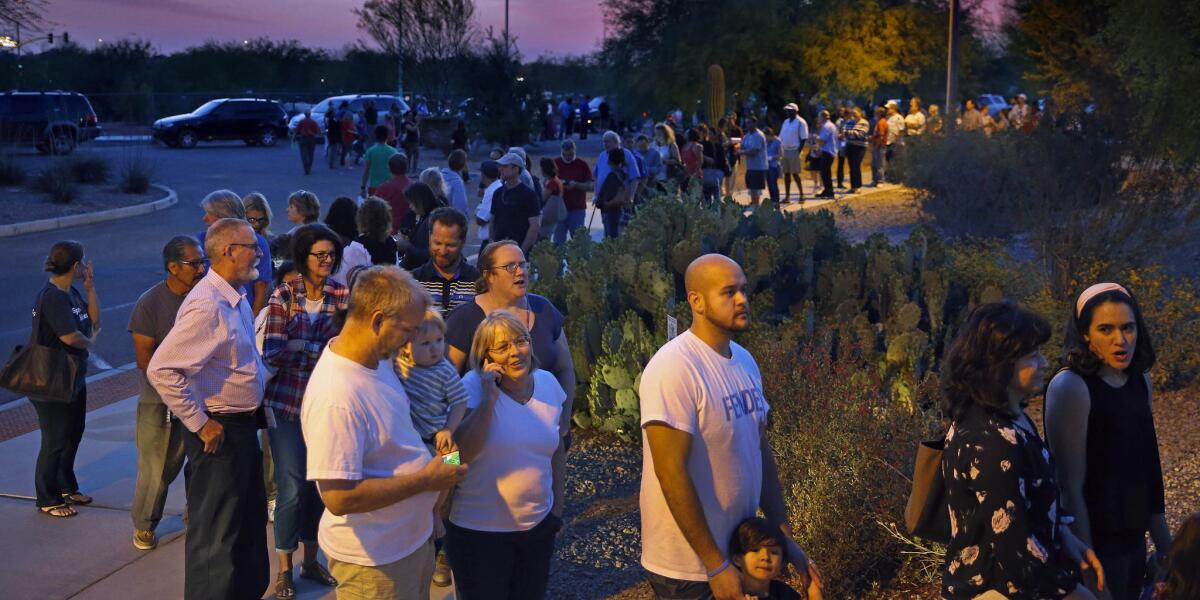Editorial: How do we prevent the California primary from becoming another Arizona?

People wait in line to vote on March 22 in Chandler, Ariz. Five polling places in the Phoenix area reportedly still had voters in line after midnight during the state’s recent presidential primary.
Thanks to Donald Trump and Bernie Sanders, it looks as though Californians’ votes in the presidential primaries may actually matter this year. In the past, the Democratic and Republican nominees had generally been well established by the time the California primary rolled around, and the election was pretty much ceremonial. But this year, because no candidate has won enough delegates to secure his or her party’s nomination (or hasn’t elbowed aside his or her remaining competitors yet), the campaigning is expected to continue right up to the state’s June 7 primary. That’s a nice change for Californians — their votes could determine the presidential contest.
The prospect that the California primary could be a deciding factor is fueling a big increase in voter registration. More than 600,000 Californians have gone online to register to vote or update their registration in just the last three months; 10,000 people in one day. And those are just the voters who have used the state’s online registration system; state officials haven’t yet tallied the paper registrations that have been submitted. As primary day gets closer and the campaigns focus more time and energy in the state, the number of registrations is expected only to grow. One campaign alone recently requested 200,000 registration forms to sign up voters, according the Secretary of State Alex Padilla.
The big question is whether elections officials in the state’s 58 counties are prepared to handle a potentially record-breaking turnout. This week Padilla sent a letter to Gov. Jerry Brown and state legislative leaders making a pitch for $32 million in one-time funding to help his office and local officials manage the workload.
He’s right to be concerned after high participation and poor management in Arizona and other states forced people to wait in line for hours to cast primary ballots.
Elections officials are also preparing now for the November election, which is expected to include an unusually large number of ballot initiatives. Padilla said that 13 potential initiatives are still in circulation (on top of eight that have already qualified); if all 13 are filed, officials around the state will have to process and verify some 9.4 million signatures — just at the time when they are managing the June primary.
Over the next few months, counties will need to print more ballots, hire more temporary workers and train more volunteers. That all costs money.
If California is going to matter this year, let’s get it right.
Follow the Opinion section on Twitter @latimesopinion and Facebook
More to Read
A cure for the common opinion
Get thought-provoking perspectives with our weekly newsletter.
You may occasionally receive promotional content from the Los Angeles Times.










